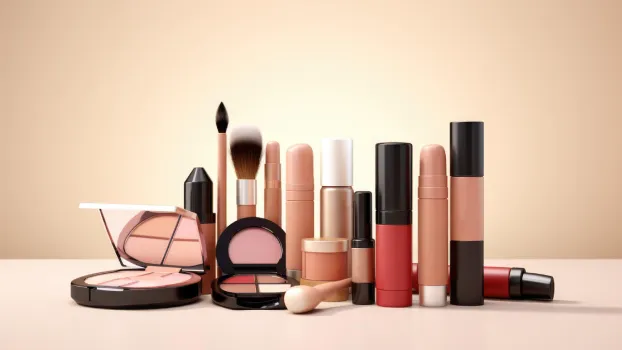Shelf Life Of Cosmetic Products: A Complete Guide
Knowing that scientists have tested the safety of your makeup is reassuring isn’t it?
Just as important as making products feel and look good is ensuring that they are safe, stable and effective in the fields of cosmetics and personal hygiene. In this case professional laboratory testing is helpful. Through stability studies and expiry validation advanced testing assists brands in making sure their products remain safe, effective and compliant for the full duration of their intended lifespan.
At TestHub Laboratories, we use science to determine product shelf life in order to help cosmetic manufacturers and brands in the United Arab Emirates establish credibility and adhere to regulatory standards.
Table Of Contents
Why Does Shelf Life Analysis Of Cosmetic Products Matter?
Cosmetics should be stored carefully. has long-term safety and effectiveness. Customers’ skin health and safety may be directly impacted if the product’s shelf life is not appropriately evaluated.
- To guarantee safe use keep in mind that expired products may result in infections, allergies and skin issues.
- The product loses its effectiveness as its active ingredients or key components deteriorate over time.
- In order to adhere to national and international safety regulations shelf life testing is required.
- Customers will have greater faith in the brand if the proper shelf life is stated.
- The credibility of the brand could be damaged if its products expire and end up on the market.
Steps Of Shelf Life Analysis
Quantity Production:
Verifying the product’s production quantity is another crucial step in the shelf life testing process. Both the small lab-scale sample production and the full commercial scale production must be examined.
- It is feasible to verify that the amount of ingredients storage and manufacturing procedure are all at the same level when producing large quantities of goods.
- The large-scale product should be identical to the laboratory samples in order to maintain efficacy.
- Flaws changes and deterioration can be detected beforehand when large-scale products undergo shelf life testing.
- We can give customers a product that is both safe and effective by making sure that the product’s composition and quantity are correct.
Filling of Product:
Verifying the product’s filling is an essential step in the shelf life testing procedure if the product is packaged. Examining the product’s internal packaging and its relationship to stability and longevity is also crucial.
- The product quantity in the container must be accurate in order to guarantee filling accuracy.
- The components functionality and shelf life may be impacted if there is less or more.
- To make sure that the tube lid and seal are functioning as intended.
- Inadequate packaging increases the chance of microorganisms getting into the product endangering its safety and potential shelf life.
- The product’s color consistency and odor are all kept constant by the packaging design.
Preliminary Test:
One crucial stage in the shelf life testing procedure is the preliminary test. It is the initial test to make sure the product is stable and of basic quality.
- The completeness of ingredients test determines whether the product contains the proper amount and quality of each ingredient.
- The preliminary stability test determines whether the products main characteristics,color, odor and consistency are preserved.
- The products stability and safety are guaranteed by inspecting the initial filling.
- The first test assesses the products microbial resistance guaranteeing its safety.
storage of Product:
This stage is crucial because in this stage is determining the stability of cosmetic products.
- Care is taken to ensure that the chemical components of the product are not impacted by changes in temperature, humidity and humidity.
- Controls oxidation and light hairlighting to maintain the products color fragrance and quality.
- The lab checks the package’s integrity during storage.
- Evaluates how the product reacts to conditions such as changes in temperature and high humidity.
Final Analysis:
Finally the shelf life testing procedure is called Final Evaluation. This validates the product’s shelf life and enables a comprehensive assessment of the results of all earlier tests.
- Together all test results including filling storage stability testing and preliminary quantity production are evaluated.
- Ensures the product will function effectively and safely for the duration of its shelf life.
- Testing for the stability of chemical ingredients reveals whether the primary constituents have changed or deteriorated over time.
- Upon successful completion of the final evaluation the product can be shipped to customers with a safe shelf life.
Benefits
- Before the product expires, shelf life testing makes sure it is safe.
- This can aid in the prevention of microbial diseases, allergies and skin issues.
- Prevents the product’s active ingredients from deteriorating over time.
- Aids in meeting regional and global requirements for cosmetic safety.
- Customers have faith in the market because it produces safe and efficient goods.
- Retailers and distributors can make important plans ahead of time determining the products’ accurate shelf life.
- Offers a chance for the company to market the idea of long-lasting and safe.
FAQ
A lab test called shelf life analysis establishes how long a product can be used in a safe and efficient manner.
Yes. Testing for shelf life is essential to guaranteeing consumer safety effectiveness and legal compliance.
Preliminary testing, quantity production, filling testing for storage and environmental conditions, stability testing and final evaluation are the primary phases.






